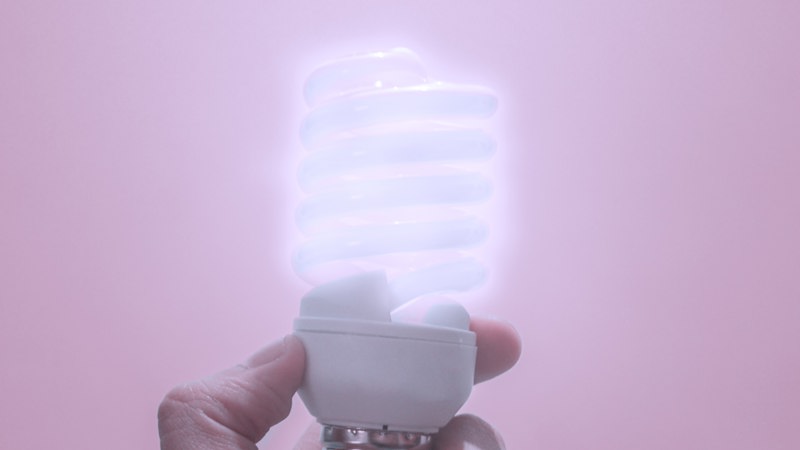
Demand for electricity is increasingly being met from renewable sources. These, by nature, are intermittent, making it urgent to coax customers to use more power during typically sunny or windy periods and when electricity demand is not at its peak. At the same time, there is an increasing number of options to make electricity load more flexible, say through the ability to time-shift the charging of electric vehicles, or increasing flexibility in using power for heating, cooling and other industrial processes.
One incentive mechanism is dynamic Time-of-Use (TOU) electricity tariffs that provide different rates for each hour/half-hour of consumption and can change at short notice. However, dynamic TOU tariffs have yet to take hold across many countries in Europe, partly because of the slow roll-out of smart meters. One solution would be to mandate dynamic power pricing; another route is via innovation, with advances in smart household technology allowing consumers to automatically respond to dynamic price signals.
What is driving the need for change?
As the battle against climate change ramps up, intermittent or variable generation of electricity from renewable sources such as wind and solar is increasingly displacing on-demand (or ‘dispatchable’) fossil fuel generation. All the while, demand for power is projected to grow through the expanded use of electric heating and vehicles.
Against this backdrop, the need to improve the responsiveness of electricity demand is becoming imperative. Greater levels of intermittent generation mean a greater need to hold dispatchable generation in reserve at high cost so it can be fired up when the wind drops or the sun goes in. And in hours when there is insufficient demand, excess generation from renewable resources has to be curtailed. That, too, comes at a cost.
One solution to the problem of intermittency is to provide dynamic price signals to consumers that encourage them to use power during sunny or windy periods; away from typical system peak hours (4-7 pm on weekdays); or when businesses and large industrial users are shut at the weekend.
To that end, the European Union is promoting dynamic power pricing as a form of implicit demand response. The EU’s Clean Energy Package, which sets out the bloc’s long-term energy policy, requires Member States to ensure that every final customer is entitled to a dynamic electricity price contract from their supplier allowing them to adjust their consumption according to real-time price signals.
What are Time-of-Use tariffs?
As the name suggests, in a TOU tariff arrangement the cost of electricity varies depending on when it is used. Static TOU tariffs with pre-set fixed rates for different times of the day, for example peak and off-peak, are well known. In the UK, the Economy 7 tariff has an off-peak rate for units consumed overnight (typically to coincide with when storage heaters are being charged), and a higher daytime rate. Similar tariffs are also available in other European countries, for example Germany and Spain.
Dynamic TOU tariffs are a more sophisticated version of this principle. Crucially, the rates are not fixed in advance. Instead they may change at short notice (for example, the day before or even on the day itself). Being aware of how much energy actually costs at any point, consumers can be encouraged to shift their usage from high-cost peak hours to cheaper off-peak periods. This incentive is more likely to appeal to price-sensitive customers and to those with appliances that consume a lot of power, such as electric vehicles and heat pumps, and have some flexibility as to when these appliances use power.
In the past, dynamic tariffs have by and large been available only to big commercial and industrial users, but increasingly they are also being offered to domestic and small commercial customers to encourage them to adjust their consumption in response to real-time price signals.
Low take-up for dynamic TOU tariffs
However, households and small business users have not signed up in great numbers for dynamic TOU tariffs in many European countries. There are several reasons for this:
General lack of interest in managing electricity consumption. Most consumers view electricity as something that they use when they need to, not when it will be cheaper to do so.
Poor incentives. Responding to price signals might not be worth the effort. Historically, wholesale prices have not been high or volatile enough for consumers to save very much by switching from high-peak to off-peak usage. Moreover, nearly two-thirds of the average EU retail consumer’s bill is made up of fixed, regulated network costs and taxes, limiting the scope to pass on energy savings.
- Most participants in a pilot study in Germany expected that by doing their washing and drying in off-peak periods with cheaper energy tariffs they would make annual savings of 12%-30%.[1] Such savings are unlikely to be achieved. A more recent pilot project concluded that for many households the expected savings would not even cover the cost of investing in the smart meters required. [2]
In Spain, a stylised calculation for a typical residential consumer under the Voluntary Price for Small Consumers scheme (PVPC)[3] shows the potential to save only a few cents a year if she were to change her habits and use proportionally more power in hours with lower PVPC rates (see below). Of course, the more power is consumed off-peak the greater the savings, but only certain consumers may have the flexibility to make large shifts in consumption.

Limited penetration of smart meters. For a company to be able to charge a particular price for a particular hour, smart meters must be installed that can accurately record consumption in real time and relay the information to the supplier. Unfortunately, the roll-out of smart meters has been significantly delayed in many European countries, preventing the full value of dynamic TOU tariffs from being realised. While considerable progress has already been made in Italy and Spain, in many other European countries, for example the UK, Germany and Norway, the roll-out of smart meters to residential customers and settlement of bills based on these meters has been slow and challenging.
Given this limitation, most customers have thus typically remained on relatively simple, static tariffs. In the Scandinavian countries, even where smart meters have been distributed, the predominant price structure that has emerged is one of variable tariffs that change monthly and can send price signals that induce seasonal (instead of intraday) consumption shifts. Seasonal fluctuations in electricity generation due to relative water scarcity in winter, in combination with high dependency on hydro generation, mean a monthly price signal has been sufficient. Nevertheless, the expectation is that in future billing against hourly tariffs will provide customers the most cost-reflective electricity price.
Ways to speed up the adoption of dynamic TOU tariffs
We look at two options that may help drive uptake – one regulatory and one market-driven.
TOUs as the mandatory and/or default option. Where the roll-out of smart meters is sufficiently advanced, regulators can spur the use of dynamic TOU tariffs by requiring suppliers to offer them to all customers. This could be made the default option: consumers would have the option to switch away from them, not to them. Spain, Italy and Ontario adopted this approach some time ago; all residential customers of California’s investor-owned utilities will default onto TOU tariffs in 2019.
Spain’s experience is particularly instructive. Nearly 40% of residential consumers are on dynamic TOU tariff contracts, significantly more than in Europe as a whole. This is a consequence of the government’s decision to make the dynamic PVPC tariff the regulated default tariff for small users.
Until 2013, there were two regulated tariffs: flat-rate and static time-of-use. Providers mandated to offer regulated tariffs were ordered to buy electricity for small users through government-organised auctions. In 2013, the regulator rejected the results of the auctions held that year and took the opportunity to modify the design of regulated tariffs.
The government judged that passing through the cost of generating electricity, reflected in hourly spot prices, to end-consumers would be appropriate for three main reasons. First, it would reduce energy bills by lowering the cost of providing certainty of fixed price contracts because suppliers would have limited need to hedge against electricity price movements. Second, it would minimise regulatory failures by decoupling regulated tariffs from the government-organised auctions. And third, electricity prices would be more effective in signalling scarcity.
The default nature of the PVPC means that customers need to opt out of the tariff rather than opting into it. This is the key reason why a significant proportion of Spanish consumers pay for their electricity according to dynamic TOU tariffs.
Spain’s experience reinforces the lesson from other markets: opt-out schemes result in higher levels of enrolment. Ontario became the first jurisdiction in North America to introduce TOU tariffs as the default option in 2012. [4] Within four years, the enrolment rate was 89%. By contrast, a successful TOU opt-in offering, according to one estimate, may have been able to attract only 20% of customers.[5]
Market-driven innovation. Innovation in household technology can offer an alternative to the regulatory approach and make dynamic TOU tariffs more attractive to consumers. In particular, smart devices can allow users to capture more potential savings and, by automating the process, spare them the trouble of actively monitoring and responding to changes in tariffs.
While high upfront costs of these devices can be a deterrent, some suppliers have already started investigating this possibility. At an event organised by a UK supplier that has recently started offering dynamic TOU tariffs,[6] a few examples of what such innovation in smart household technology may involve came to light:
- Energy Systems Catapult, Daikin and PassivSystems have designed a fuel-switching technology for heat pumps that can automatically change from gas to electricity at times when electricity prices are low.
- Ecopush, a start-up, has developed an Amazon Alexa-based application that lets customers transform any home appliance into a smart device and allows them to say “Alexa, turn on my tumble dryer when it’s cheapest/greenest/right now”.
- If This Then That (IFTTT), a Silicon Valley start-up, provides a service that allows users to automatically turn smart devices or appliances on or off when the price of energy changes or when the price of energy is expected to fall below a certain level for a certain period of time.
- Myenergi has created an app that allows customers to charge their electric car (or any household appliance, e.g. a kettle) either from the grid or from their rooftop solar panel, depending on the price at the time.
“Bundling” electricity with other goods and services may also speed the adoption of new technologies. For example, energy suppliers are partnering with technology providers to offer discounts on everything from smart thermostats for the control of electric heating systems to battery storage and home charging units for electric vehicles. Other examples of bundling include combining EV leasing with discounts at EV charging stations in Sweden when signing a TOU tariff contract with the respective supplier.
Conclusion
An increasing share of electricity is being generated from renewable sources as the drive to reduce carbon emissions gathers pace. At the same time, efforts to match demand for electricity more closely with the inherently intermittent supply of solar and wind power have lagged. There is thus a need to send consumers price signals and encourage them to adjust their consumption accordingly.
One way to do this is through dynamic TOU tariffs, which vary at short notice according to electricity supply and demand within each time period. But dynamic TOUs have been slow to take off, not least because many European countries have dragged their feet installing smart meters. The exception is Spain, where 40% of consumers are now on dynamic pricing since regulators made dynamic TOU tariff the default option.[7] The alternative, promising route to improve the responsiveness of demand is through innovation. Before long, technology will enable consumers to respond to real-time energy price signals as readily as they react to petrol prices at filling stations today.
[1] Stamminger, Anstett (2013): Effectiveness of demand side management by variable household energy tariffs.
[2] Forschungsradar (August, 2018): Die Digitalisierung der Energiewende, p.19.
[3] The acronym of its Spanish term: Precio Voluntario para el Pequeno Consumidor.
[4] Brattle (July, 2016) Analysis of Ontario’s Full Scale Roll-out of TOU Rates – Final Study.
[5] Brattle and UCL (July, 2017) The Value of TOU Tariffs in Great Britain: Insights for Decision-makers.
[6] Octopus Energy. A Hack Day for the future of energy. 13th August 2018.
[7] Dynamic pricing is also the default energy supply option in Estonia, and millions of customers are on a default static time-of-use rate in Italy.





